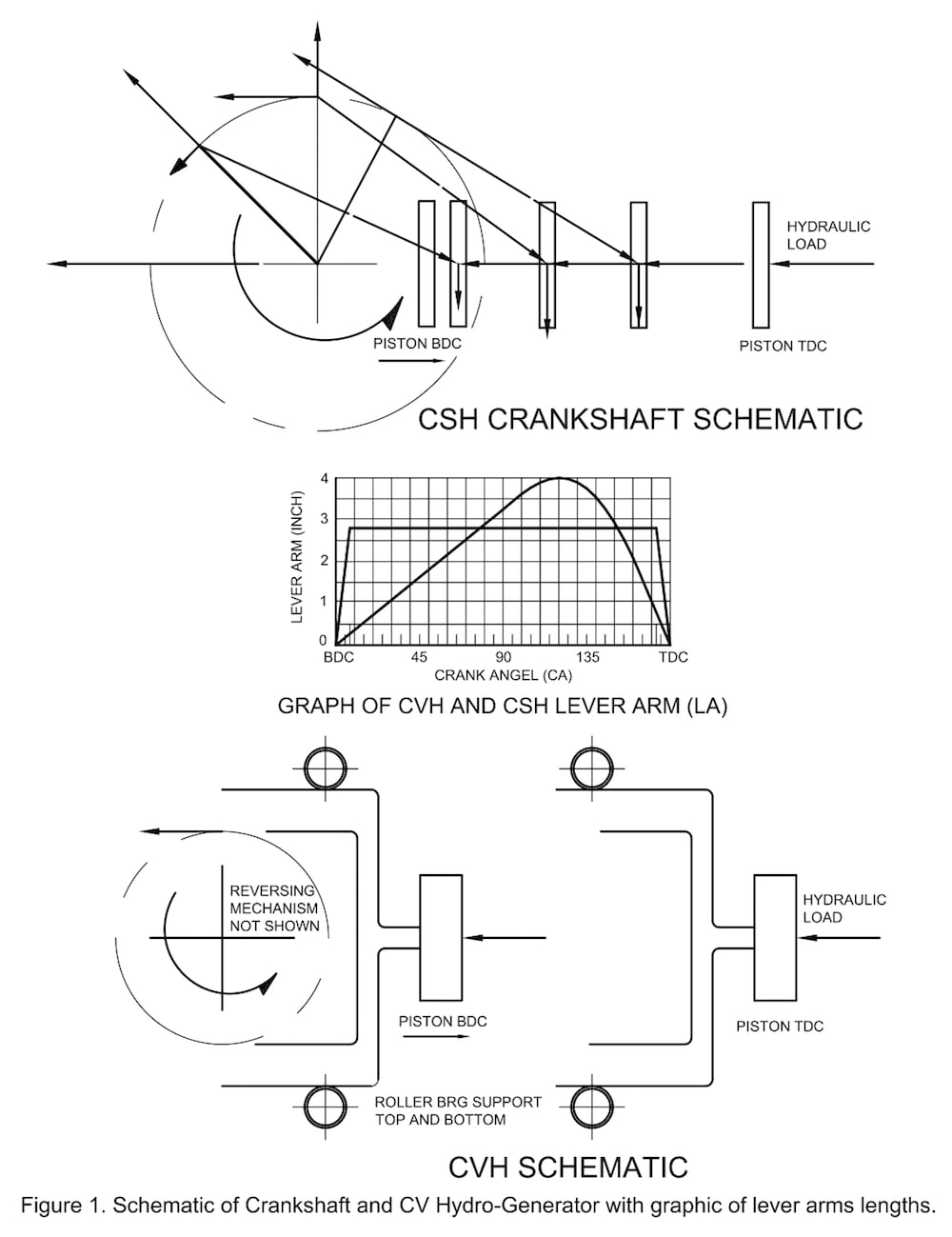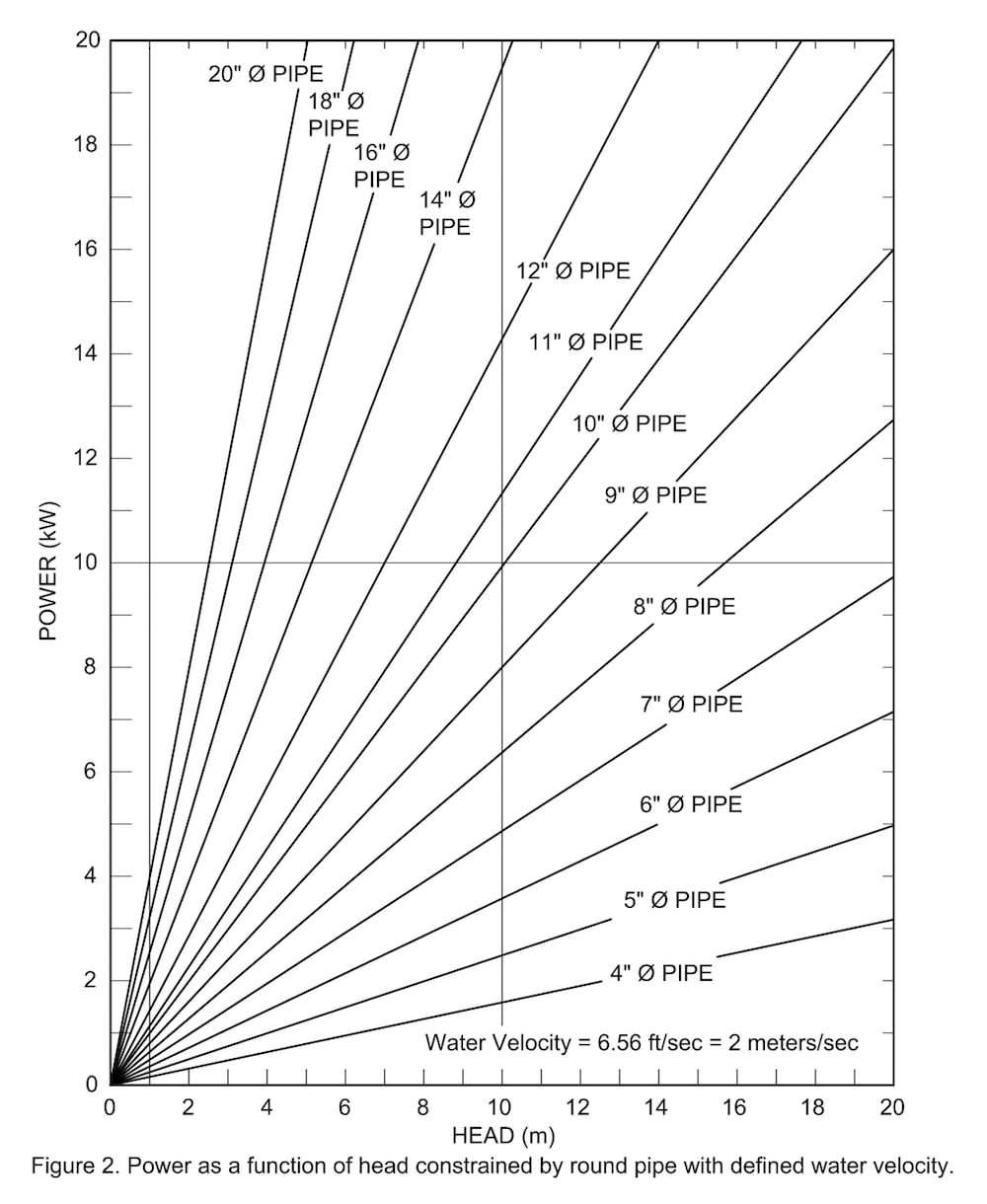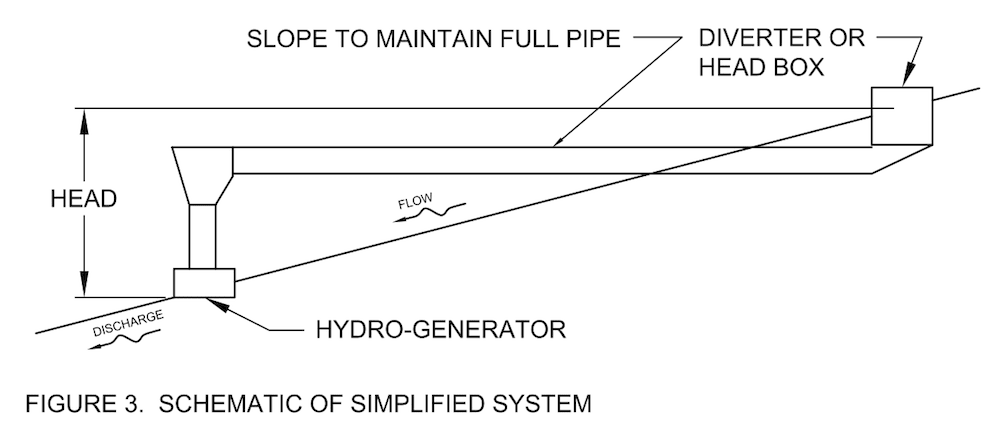There are about 60,000 MW of undeveloped hydro power in the US today (HR-267) and there are similar circumstances throughout the World. Any turbine under 10 meters of head or less than 10 m3/sec of water flow is so inefficient that they are not cost effective. Also, Western drought conditions have reduced historical hydro electrical production by 10%. It is time we looked at kW per gallon or volumetric efficiency as opposed to the mechanical efficiency which generally only measures friction loss.
The best way to capture this marginal unused hydraulic electrical potential is by using positive-displacement hydro-generation. A positive-displacement hydro-generator has the ability to produce some power at any head and flow. Low head sources can use the low head pressure and velocity head of large flows diverted to pipes and high head sources can use head pressure and velocity head of low flows constrained by a suitable diameter pipe. Besides natural flow there are many manmade sources such as discharge from fish farms, waste water treatment and impoundments other than dams. Also, flows can be captured in fixed volume pipes, extended down stream to create higher heads and discharged into the original source. This minor disruption would have no effect on the source flow volume and negligible ecological impact.
The crankshaft (CSH) has three problems when used as a hydro-generator:
• The geometric motion of the crank is difficult to balance and causes vibration, pulsation and harmonics.
• The crankshaft has an inherent energy loss of 50% or more due to the sinusoidal motion and another 10% to 20% in friction.
• Due to the fixed design issues, shock and maintenance the CSH has a short design life.
The CV Hydro-Generator (CVH) has replaced the crankshaft of the CSH to convert linear motion to rotary motion and vice versa. The CVH power stroke is 84% constant velocity and torque and uses 8.3% at TDC and BDC for piston reversal and allowing time for the filling and discharge function. With off-set piston pairs the power shaft force is balanced, constant and has no perceptible pulsation. The CVH coupled with a constant-voltage constant-frequency generator (inverter) can deliver utility grade power over a wide range of flow values. The generated power may be used, stored or sold to the grid. It is anticipated that the CVH will produce at least six times more power than a turbine in kW/gallon and operate in areas that are economically impossible for a turbine of any kind.
Figure 1 is a schematic of a crankshaft and the CVH showing the critical elements with the lever arms graphed. Figure 2 is a graph of the potential power in kW from 0 to 20m and 4" to 20"ø pipe. Actual power produced will be less because of pipe friction and dynamic flow losses within the CVH. Good design can keep the losses to a minimum. Figure 3 is a schematic of a simple site configuration.
Video
Like this entry?
-
About the Entrant
- Name:David Haley
- Type of entry:individual
- Software used for this entry:Seimens NX
- Patent status:patented








